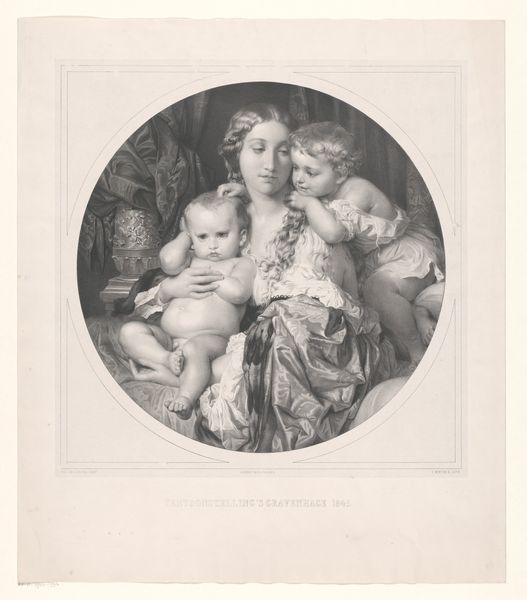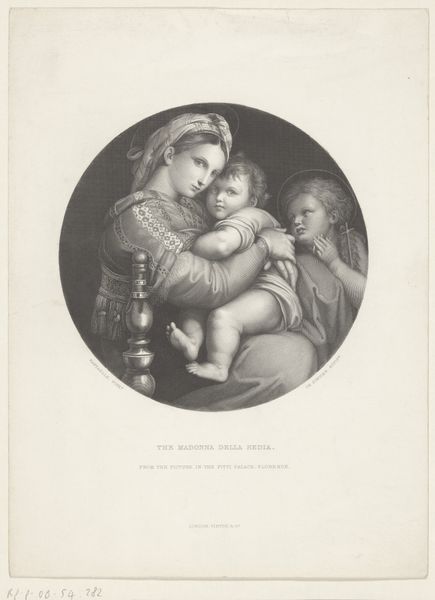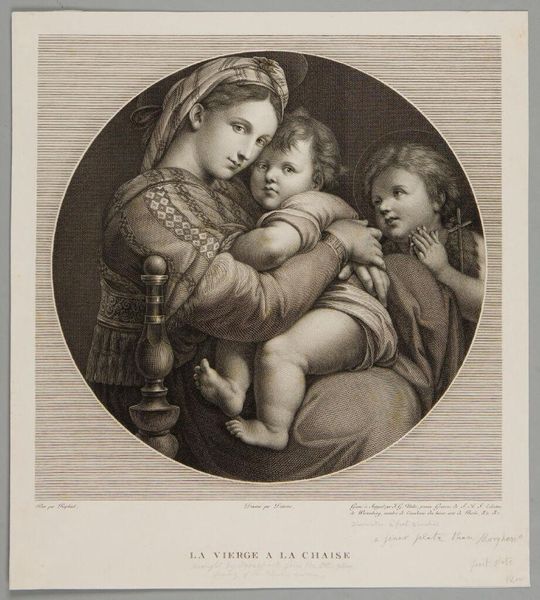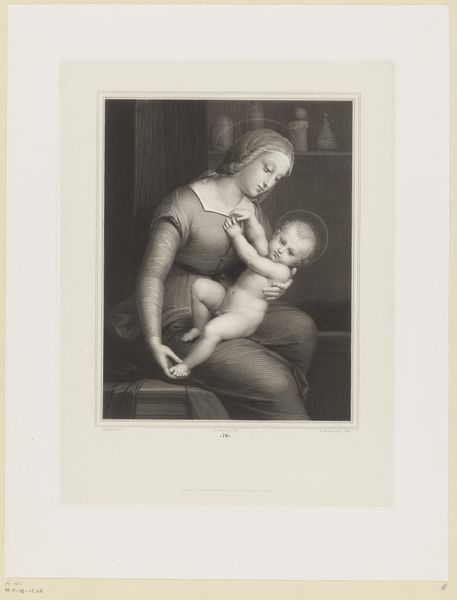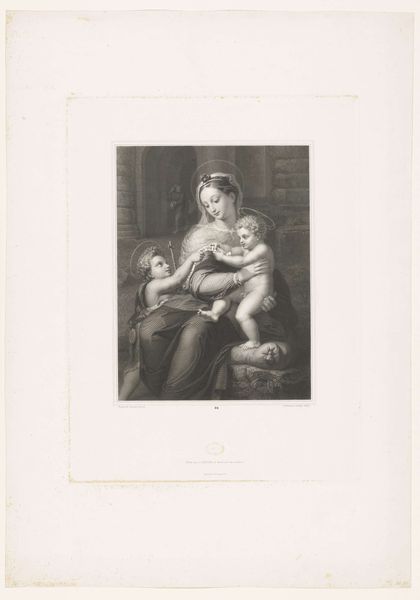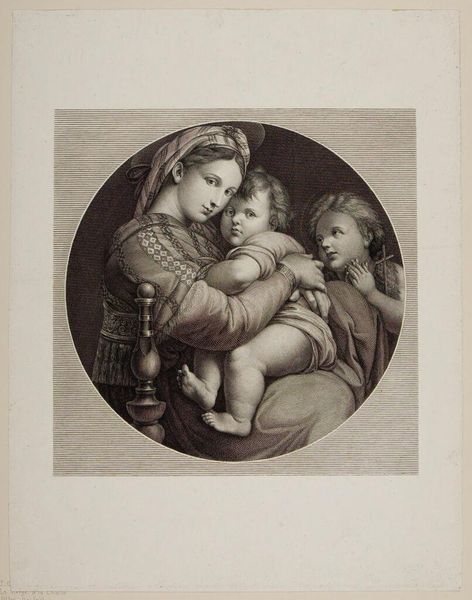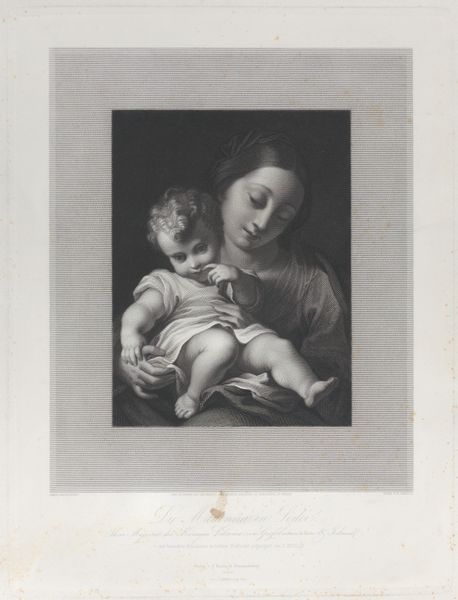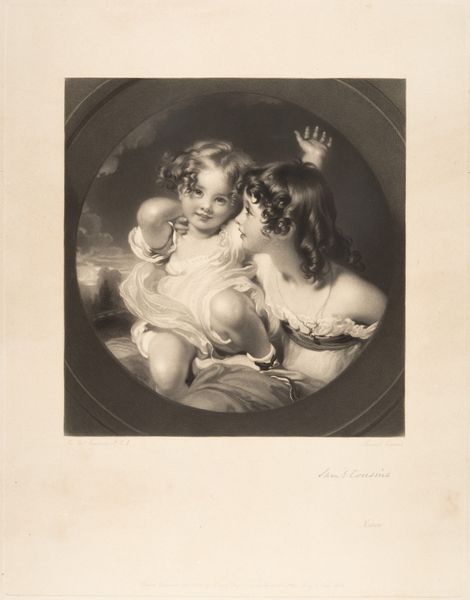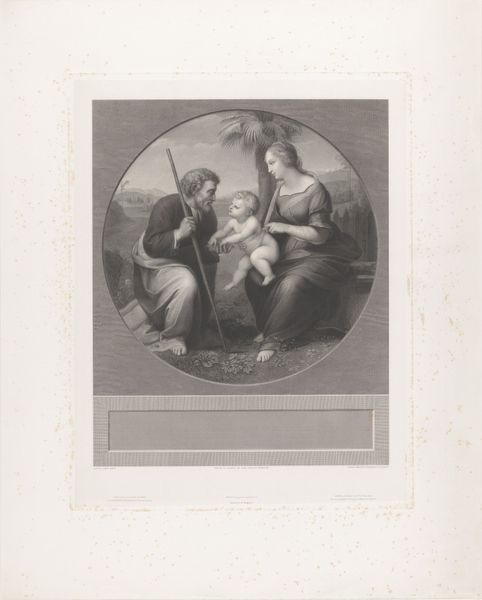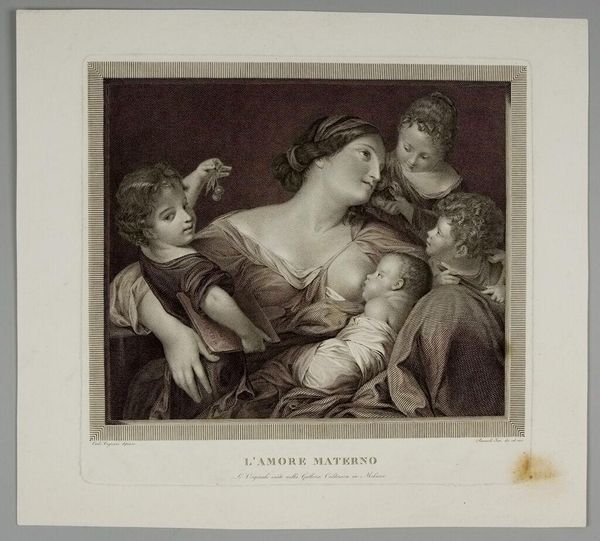
print, engraving
#
portrait
# print
#
figuration
#
history-painting
#
italian-renaissance
#
engraving
Dimensions: height 505 mm, width 461 mm
Copyright: Rijks Museum: Open Domain
Curator: This is Giovita Garavaglia's "Maria met Kind en de jonge Johannes de Doper," or "Mary with Child and the Young John the Baptist," an engraving from 1828 held here at the Rijksmuseum. It's quite stunning, wouldn’t you agree? Editor: Absolutely. Immediately I'm struck by its softness, that muted gray palette. It feels like peering into a cherished memory, faded around the edges but luminous in the center. A Renaissance daydream, perhaps? Curator: Garavaglia, while working in the 19th century, was clearly engaging with Italian Renaissance ideals, especially through the themes of familial piety and divine innocence—motifs popularized by Raphael and his contemporaries. Consider the composition—a pyramid of figures nestled within that tondo shape… Editor: It's a tender domesticity elevated, almost, to the iconic. Mary isn’t just holding Jesus; she's presenting him. John the Baptist hovers nearby, his small cross already casting a long shadow of future events. Do you feel it also depicts a subtle sense of melancholy? Curator: Yes, that’s very perceptive. While the scene radiates maternal love, the figures also carry an air of introspection, perhaps reflecting the weighty destiny that awaits the Christ child. Notice how Garavaglia employs hatching and cross-hatching techniques, particularly to define Mary’s draped clothing and convey volume in the figures. This creates a remarkable sense of depth within the limitations of engraving. Editor: Right. And consider those details of the hair and those pudgy fingers – it humanizes them, which amplifies the coming tragedy for them, foreshadowing it to us. We’re looking at symbols of holiness as if we are witnessing something intimate and mundane. A contrast to prepare us for future. Is that reaching? Curator: Not at all. By combining both monumental form and such nuanced rendering, Garavaglia invites the viewer into a very personal encounter with timeless religious themes. The intimacy is key here. Editor: Looking closer I can admire the skill with which this artist managed to suggest colors when she did not have any at her disposal other than shades of gray. Curator: It makes the experience intimate indeed. A piece that quietly resonates, leaving you contemplating the human and divine intertwined. Editor: Precisely. It’s less a proclamation and more a poignant reflection. It’s interesting how effective is its scale. Thank you, this was a beautiful moment of contemplation.
Comments
No comments
Be the first to comment and join the conversation on the ultimate creative platform.
